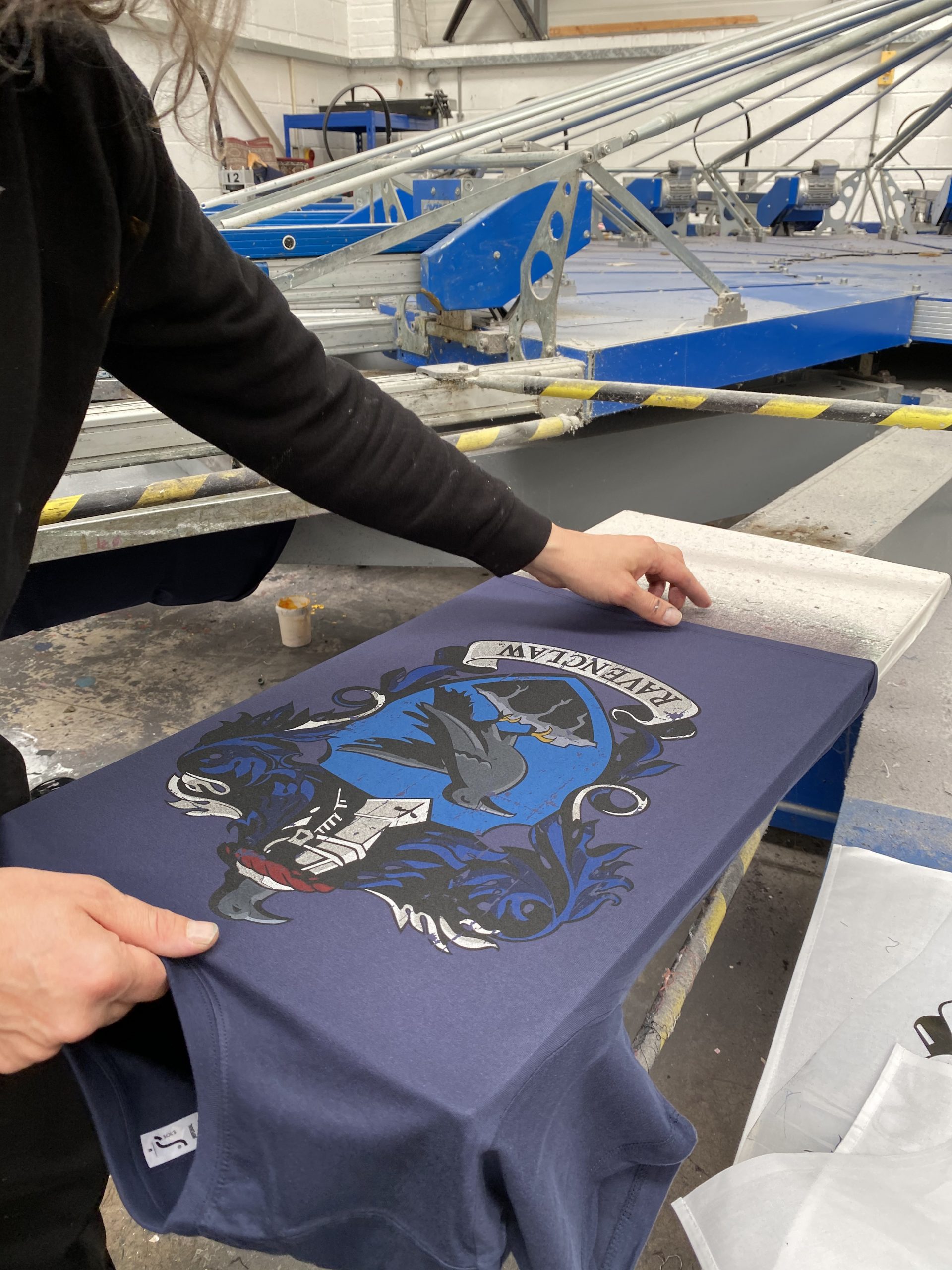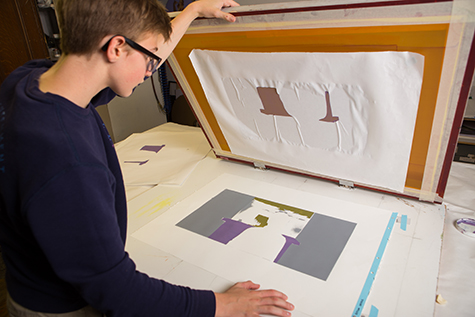ChatGPT said: 10:9 Design near me: how to find the best screen printing services locally
Discover the Various Types of Screen Printing Techniques for Your Next Project
Screen printing supplies a varied variety of strategies that can improve any type of creative project. From standard approaches like serigraphy to modern advancements such as direct-to-garment printing, each strategy has its special benefits. Specialty options, consisting of metallic and environment-friendly inks, present even a lot more possibilities. Understanding these methods can considerably affect the last outcome. The difficulty lies in picking the most ideal approach for certain requirements and preferred results. What variables should one take into consideration?

The Basics of Screen Printing
Although screen printing might appear complicated, it is essentially a simple procedure that includes moving ink via a mesh screen onto various surface areas. The method begins with the production of a pattern, which specifies the design to be published. This pattern is affixed to a mesh screen, generally made from polyester or nylon. Once the stencil remains in place, ink is used to the screen and pushed via the mesh making use of a squeegee, causing the desired pattern being published on the underlying product.
Screen printing can be performed on a large range of substrates, consisting of plastic, paper, and fabric, making it a flexible option for numerous tasks. The process permits lively shades and intricate styles, making it popular in industries such as style, art, and marketing. Comprehending these essentials outfits people with the fundamental knowledge called for to check out more sophisticated methods in screen printing.
Traditional Screen Printing Techniques
Traditional screen printing strategies have been utilized for centuries, protecting the workmanship and virtuosity of this method. This method uses a mesh screen to move ink onto a substrate, such as material or paper, enabling lasting and vibrant designs. The process starts with creating a stencil, which blocks particular areas of the screen to manage where the ink will certainly be used.
One preferred strategy is serigraphy, commonly made use of for imaginative prints and limited versions. Another is the usage of water-based inks, which are environmentally friendly and supply a soft feel on fabrics - 10:9 Design reviews. Additionally, conventional techniques can include hands-on printing, where artisans apply ink with a squeegee, making certain precision and interest to information
These methods continue to be valued in the sector for their responsive top quality and the special appearances they create, attracting both consumers and designers who value the heritage of screen printing.
Digital Screen Printing Innovations
As the need for faster production and modification in the printing sector has actually surged, digital screen printing developments have become a game-changer. This technology mixes standard screen printing techniques with electronic procedures, permitting quick prototyping and detailed styles that were formerly tough to accomplish. One significant advancement is the intro of direct-to-garment (DTG) printing, which facilitates premium, full-color prints on different fabrics without the need for screens. In addition, developments in ink formulations have actually caused eco-friendly alternatives that keep vibrant shades while lessening environmental effect. Making use of automated systems additionally streamlines production, lowering labor prices and improving precision. These advancements not just satisfy tiny batch orders and customized layouts however additionally enable quicker turn-around times, making them optimal for companies focused on meeting customer needs in a busy market. Digital screen printing, subsequently, represents an essential development in the domain of printing strategies.
Specialty Screen Printing Techniques
Discovering specialized screen printing methods reveals a diverse variety of techniques that push the boundaries of creativity and capability in the printing market. Among these, glow-in-the-dark inks provide an one-of-a-kind aesthetic impact, making styles come alive in low-light problems. Metallic inks, understood for their sparkling surface, add a touch of deluxe to printed products. An additional cutting-edge method link is discharge printing, which removes dye from the fabric rather than adding ink, leading to a soft, classic feel. High-density printing creates an elevated structure on the surface area, improving responsive interaction. Additionally, water-based inks are getting popularity for their vibrant shades and decreased ecological effect. Each of these specialized methods satisfies details layout requirements, allowing artists and brand names to create standout items that reverberate with their audiences. By leveraging these methods, organizations can elevate their screen printing tasks to brand-new heights, making certain memorable perceptions.
Eco-Friendly Screen Printing Options
Environmentally friendly screen printing choices are gaining grip as the market moves in the direction of sustainability. Lasting ink selections and the usage of naturally degradable materials are vital parts in lowering the ecological impact of the printing process. By adopting these practices, screen printers can add to a more sustainable future while maintaining top quality results.
Lasting Ink Selections

Biodegradable Materials Use
As the screen printing market develops, the incorporation of eco-friendly materials is ending up being significantly important for ecologically mindful techniques. Developers and suppliers are currently checking out inks and substratums made from natural, renewable energies that disintegrate a lot more efficiently than conventional equivalents. These naturally degradable alternatives minimize plastic waste and lessen environmental effect, aligning with the growing demand for lasting items.
Typical examples consist of water-based inks and organic cotton textiles, both of which reduce dangerous chemicals and promote eco-friendliness. Brands that take on these products often enhance their market allure, bring in consumers who focus on sustainability. As awareness of ecological problems remains to climb, the shift in the direction of naturally degradable materials in screen printing is most likely to obtain energy, cultivating a greener industry criterion.
Choosing the Right Technique for Your Task
Just how can one identify one of the most appropriate screen printing technique for a certain job? The choice hinges on numerous aspects, consisting of the material to be published on, the complexity of the style, and the preferred production quantity - 10:9 Design visit this web-site contact. Direct-to-garment printing is suitable for intricate layouts with many colors, while standard screen printing stands out for bigger runs of less complex graphics.
In addition, consideration of the end-use of the printed thing is crucial. For outside applications, strategies that use toughness and climate resistance, such as plastisol ink, may be preferred. Conversely, environmentally-conscious tasks may benefit from water-based inks or eco-friendly products.
Ultimately, understanding the task's distinct requirements allows for an enlightened selection, making sure both aesthetic appeal and functional durability. By evaluating style see here now intricacy, material compatibility, and manufacturing range, one can effectively choose the most ideal screen printing method to fulfill their job's objectives.
Often Asked Inquiries
What Is the History of Screen Printing?
Screen printing came from ancient China around 1000 ADVERTISEMENT, progressing with Japan and Europe. By the 20th century, it became popular in industrial art and fashion, revolutionizing just how styles were generated and distributed around the world.

Just how Do I Prepare Art Work for Screen Printing?
To prepare artwork for screen printing, one should assure high resolution, make use of a suitable color mode, create different layers for each and every color, and convert text to describes, ensuring compatibility with the printing process and wanted outcome.
What Materials Are Best for Screen Printing?
The most effective materials for screen printing consist of top notch inks, resilient displays, and appropriate substratums like cotton, polyester, or blends. Furthermore, utilizing appropriate emulsion and mops can enhance the printing process and final outcomes.
Can I Evaluate Publish at Home?
Yes, screen printing at home is possible. With the best materials, setup, and methods, individuals can produce top quality prints. Mindful consideration of workspace and devices is essential for effective outcomes.
What Are Usual Errors in Screen Printing?
Usual blunders in screen printing consist of inappropriate direct exposure times, poor ink consistency, misalignment of displays, not enough cleaning of materials, and disregarding to examine prints. These mistakes can compromise the quality and precision of the last product.
Screen printing may seem complex, it is fundamentally a straightforward procedure that entails moving ink through a mesh screen onto numerous surface areas. As the need for faster production and personalization in the printing industry has actually surged, digital screen printing advancements have emerged as a game-changer. Exploring specialty screen printing methods reveals a varied range of methods that press the limits of creative thinking and capability in the printing industry. The ideal products for screen printing include premium inks, resilient screens, and suitable substrates like cotton, polyester, or blends (10:9 Design contact). Usual errors in screen printing consist of improper direct exposure times, poor ink consistency, misalignment of displays, inadequate cleansing of materials, and overlooking to examine prints